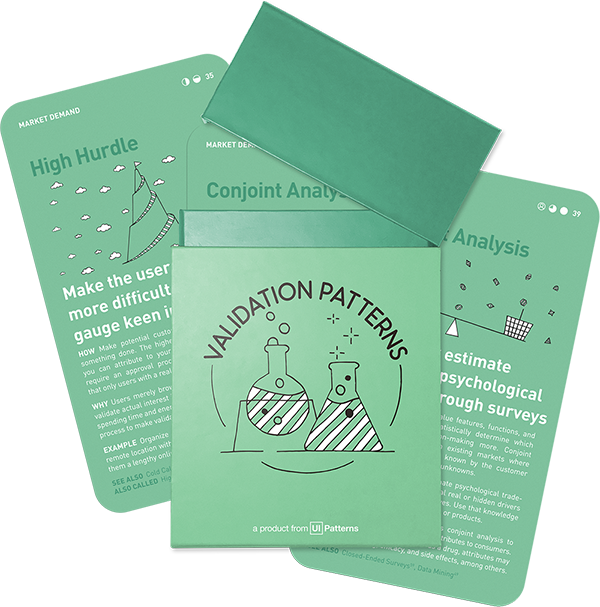Idea Validation: Problem
Family Tree
Verify that manual implementations exist for what you plan to automate

How: Investigate whether someone has already written a script or spreadsheet macro to solve the same problem or whether people are already following a checklist to prevent a category of errors. If manual implementations exist, there is a good chance you found a problem worth solving.
Why: Replacing workarounds rather than reengineering the experience from scratch lets users stay in the same mental model and thus entails less cognitive energy on changing their behavior into using your new solution.
Find manual implementations of your product
The “Family Tree” experiment assesses the existence of manual solutions to problems a product aims to automate.
If manual implementations exist, it indicates a genuine need, suggesting a market for an automated solution. This method also aligns with user habits, as it builds upon established practices rather than introducing entirely new behaviors, facilitating easier adoption of the new product.
Understanding existing manual processes helps in designing solutions that are more intuitive and user-friendly, thereby increasing the likelihood of product acceptance and success.
Examples of manual implementations that could be automated include:
- Expense Reporting. Currently, employees manually compile and submit expense reports for reimbursement. This process is time-consuming and error-prone. To automate it, a software solution could be developed that allows employees to scan and upload receipts, automatically categorizes expenses, and generates reports for approval. This would save time, reduce errors, and provide better visibility into company expenses.
- Quality Control Inspections. In the manufacturing industry, quality control inspections often involve manual checks and measurements of products. To improve this process, automation can be implemented using sensors and machine learning algorithms. These systems can continuously monitor product quality, identify defects, and even make real-time adjustments to the production process. This ensures higher product quality and reduces the need for manual inspections.
Objective of the experiment
The “Family Tree” approach focuses on validating the need for an automated solution by identifying and analyzing existing manual processes. Discovering that manual implementations are widely used to solve a specific problem confirms the presence of a gap that technology might fill more efficiently.
By replacing manual workarounds with automated solutions, developers can enhance productivity and accuracy while reducing the cognitive load on users. However, it’s crucial to ensure that the new automated solution is intuitive and aligns with the users’ existing mental models to facilitate adoption and minimize resistance to change.
A collection of 60 product experiments that will validate your idea in a matter of days, not months. They are regularly used by product builders at companies like Google, Facebook, Dropbox, and Amazon.
Get your deck!- Pretotyping Techniques for Building the Right Product by Alberto Savoia
